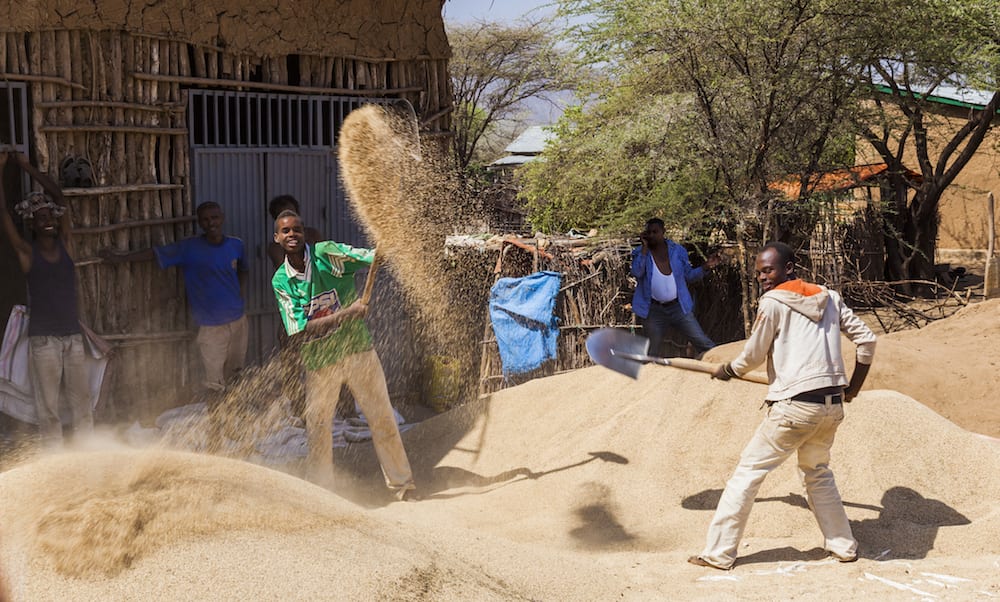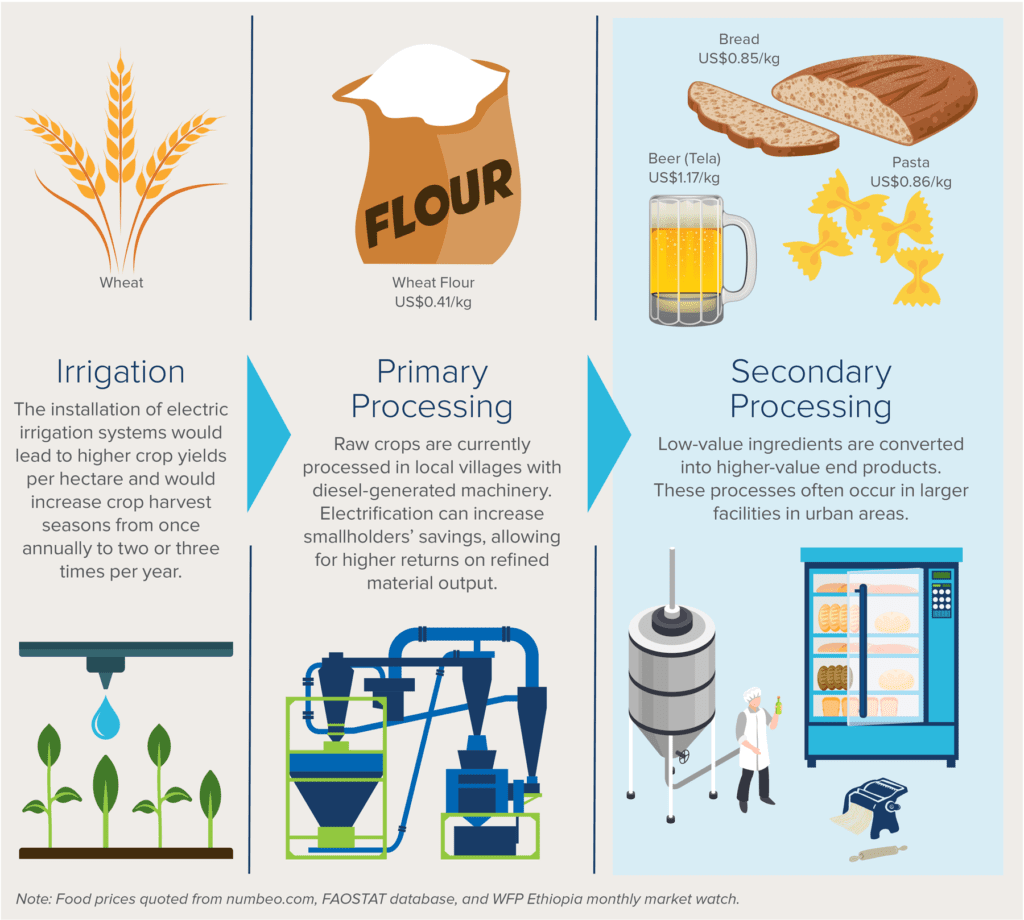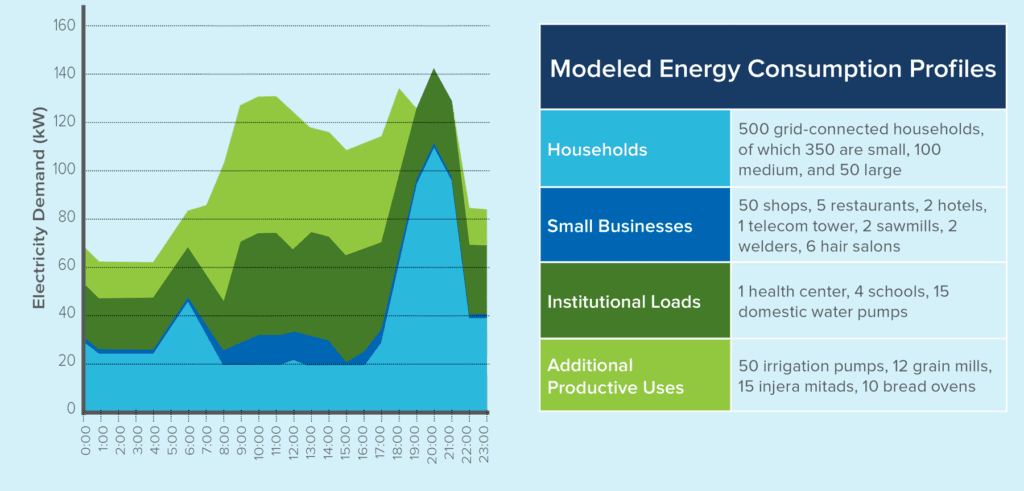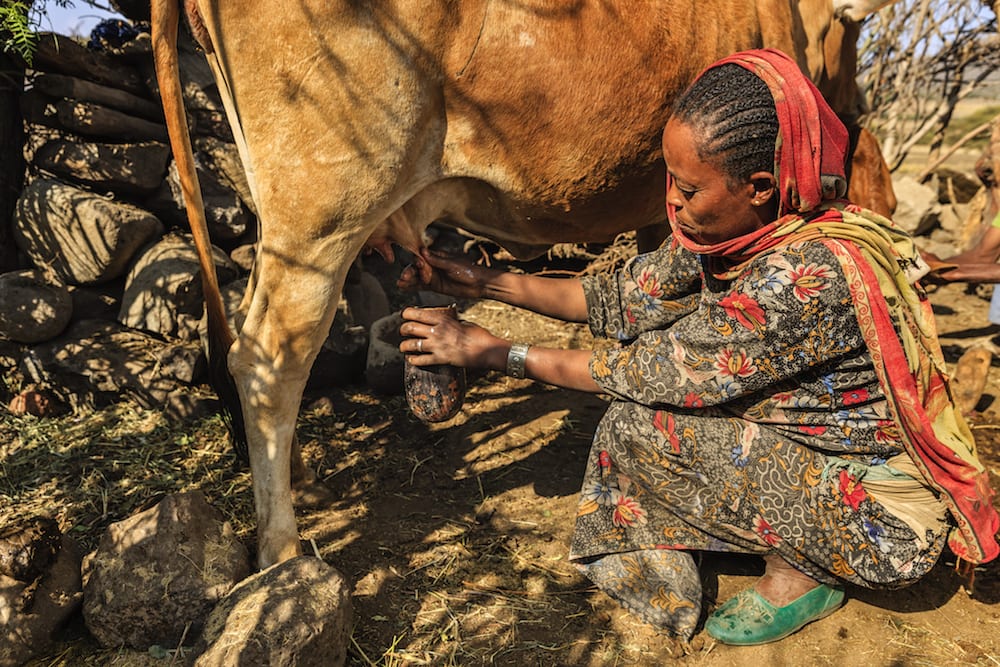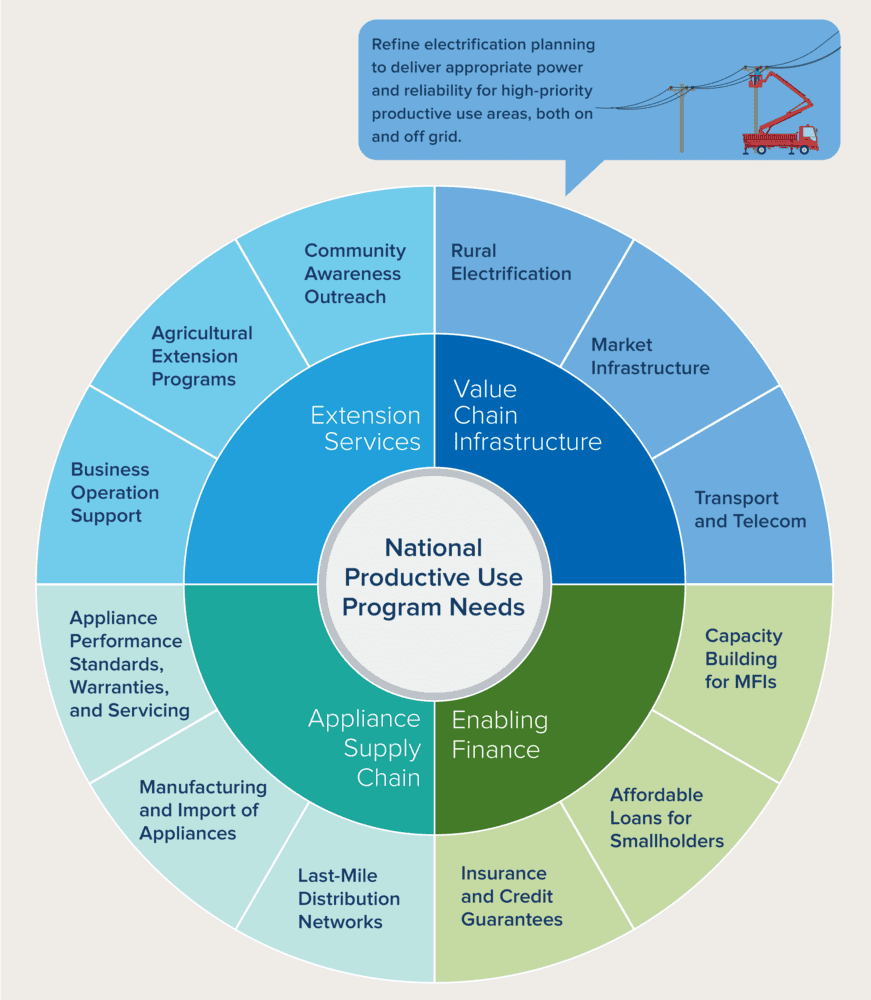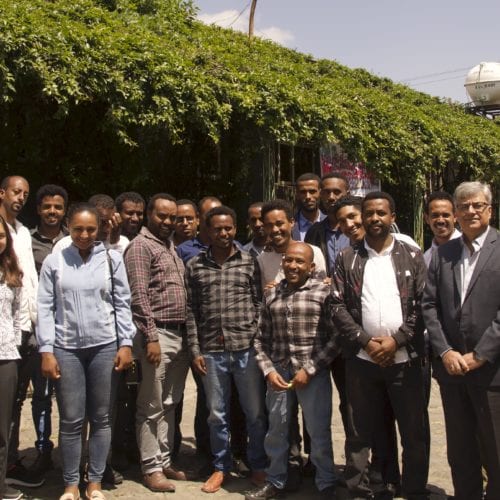
Agriculture, Rural Electrification, and Community Resilience in Ethiopia
Amid the widespread global disruptions caused by COVID-19, Ethiopia has also been facing the worst desert locust infestation in over 25 years. The economic implications of these crises on the most populous country in the Horn of Africa have taken many forms. External international trade disruptions have already started causing dips in flower exports (potentially US$150 million less than expected for annual exports), and could restrict crucial wheat imports—Ethiopia imported 1 million tons of wheat (almost 20 percent of national demand) in 2019.
An estimated 1.4 million jobs are projected to be threatened or lost in the coming three months. The State Minister of Finance has stated that support will be critical for small and medium enterprises as well as for vulnerable citizens who generally do not have access to welfare services as layoffs occur.
Leveraging Rural Electrification to Support Local Economic Recovery and Stimulus Efforts
It is increasingly critical for the agriculture sector to be resilient, especially as service sectors and exports experience suspensions in demand. Agriculture accounts for 33 percent of Ethiopia’s GDP (2018/19) and 70 percent of its exports(2014), with almost eight of every ten workers in the country connected to the sector.
Rocky Mountain Institute (RMI) has published a new insight brief that explores the opportunity for mutually assured success among agricultural transformation and rural electrification efforts in Ethiopia through productive uses of energy (revenue generating end-use energy applications). Across a few target crops, we identify a US$4 billion economic opportunity from electrifying smallholder agriculture, while saving farmers money on diesel, improving the financial health of the utility, and developing a US$380 million local market for appliances.
This analysis, developed in collaboration with the International Food Policy Research Institute, and with the support of the Ethiopian Ministry of Water, Irrigation, and Energy and the Agricultural Transformation Agency (ATA), outlines the synergies between rural electrification and agricultural productivity, processing, and businesses, and the value that can flow from closely linking the two.
Ethiopia is already working hard to transform the agricultural sector, most notably by increasing agricultural productivity and targeting cultivation of high-value crops for export. The second national Growth and Transformation Plan (GTP-II) set out a goal to increase crop production by smallholder farmers 50 percent over five years, while the 2014 Agricultural Mechanization Strategy plans to “raise the level of Ethiopian agricultural mechanization from 0.1 kW/ha to 1 kW/ha, with at least 50 percent derived from mechanical/electrical power.” For comparison, India’s level of mechanization was approximately 2 kW/ha in 2014, and China’s was over 6 kW/ha.
Empowering Rural Communities
Rural communities—Ethiopia’s most vulnerable—capture only a small portion of the value from agricultural processing. In the case of wheat, factories for bread, pasta, and beer are generally largescale facilities located in or near urban areas. This is largely because agricultural processing opportunities are difficult to access without reliable, affordable electricity. Today, just 30 percent of Ethiopia’s rural population has access to electricity, often through small solar lights or intermittent grid supply. To overcome this, Ethiopia’s authorities have committed to ambitious targets of universal electrification by 2025.
RMI’s analysis showcases some of the opportunities brought by electrification to enable some of these activities on a smaller scale in rural areas. We selected agricultural activities that could use electricity to save fuel costs or enable new revenue generation for rural smallholders—all viable at the household level or small scale—while focusing on sectors in the GTP-II and ATA priority intervention areas: grains, high value crops, and the dairy sector.
By mapping key value chains and six processing opportunities (horticulture irrigation, grain milling, bread baking, injera baking, milk cooling, and coffee washing), this analysis demonstrates a US$4 billion economic case for a national program to promote the productive uses of electricity.
Utility Benefits
Doing this would also add US$22 million in annual revenue streams for the utility and minigrid developers, helping to justify investment in power systems for rural institutional loads like critical facilities.
Peak loads in Ethiopia are usually related to household consumption, especially in the evening. Increasing daytime loads (like agricultural processing) and introducing flexible loads (like water pumping) allow the same infrastructure to sell more power, thereby increasing the return on assets. This is beneficial for on-grid electrification, and crucial for enabling the use of minigrids in off-grid electrification (incorporating productive uses in minigrids can reduce the cost of providing power by over 20 percent)
This exhibit shows the load curve of an example community, with estimated energy consumption of electrified households, small businesses, and institutional loads. Adding irrigation pumps, grain mills, injera mitads, and bread ovens to the expected consumption (representing four of the value chains analyzed in this study) can increase the daytime consumption significantly, flattening the load profile and increasing electricity sales with little additional connection infrastructure.
Community Resilience
While the economic opportunity is enormous, the lasting impact of joint agriculture and rural electrification efforts are especially relevant today. Simply diversifying business activities would help better shield rural communities that depend solely on crop yields for their income. The increased income would also empower these groups to better afford to prepare and protect themselves in times of emergency.
Productive uses of energy would help accelerate universal access goals and guarantee power—especially in times of crisis—for facilities like community health clinics that otherwise might have only intermittent access. Ultimately, electrifying agricultural business activities should extend entrepreneurial opportunities to women and impoverished groups, encouraging equitable national growth and empowering all citizens.
Rural households—especially women in the household—typically may not have the finance, appliances, or business knowledge to produce products for local markets. RMI, in partnership with the Government of Ethiopia, is committed to helping understand and address these barriers.
We plan to help conduct a comprehensive national mapping of productive use opportunities, followed by further identification of operating barriers and user needs. We will work to support frameworks that calibrate rural electrification efforts with high-potential agricultural regions to help ensure that both projects can succeed. All of these will help the government design a national productive use program that can support both agriculture and electrification, driving Ethiopia’s national growth through mutual efforts.
The evolving situation in Ethiopia and around the world will undoubtedly involve numerous emergency measures to safeguard systems from becoming overwhelmed. Given that the research predated these crises, this insight brief does not directly address ongoing efforts to address Ethiopia’s critical shocks today. Yet, the analysis helps inform discussions on increasing community resilience in response to today’s shocks, and in preparation for tomorrow’s.
Download the insight brief here.
Images courtesy of istock
